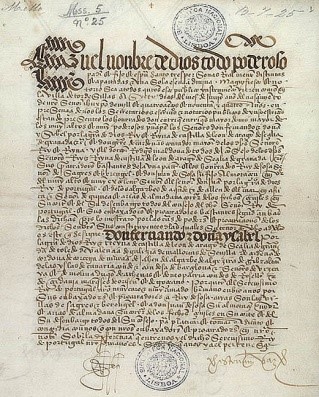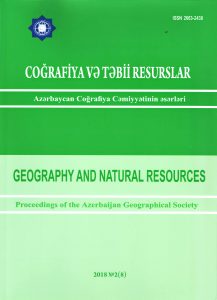BULLS OF POPES OR DIVISION OF THE WORLD - II PARTThe bull “Dum diversas” was signed on June 18, 1452 and it was the first historical document on division of the world. The Pope Nicolas V noted in his bull (“Inter caetera”) signed on January 8, 1455 that, monopoly of the trade with African coasts belonged to Portuguese.
But in spite of it, only 1479 may be considered “the year of change” for Portuguese. The Atlantic Ocean was divided into two parts in accordance with the treaty concluded in Alcasovas in 1479 in September. The Pope Sixtus IV invited both parties to negotiations on June 21, 1481 in order to confirm the treaty of Alcasovas and acquainted them with the bull “Aeterna Regis”.
 The Pope Sixtus IV (1471-1484) The king Alfonso V, who gave up his demands for territories of Castilia could get very convenient privileges for Portugal: Canaries remained as the property of Castilia, but Azores and Madeira Islands were registered as the inseparable territory of Portugal. Spanish vessels hadn’t to go below the 28th parallel of the north hemisphere when organized any expedition. Half of the Floridian Peninsula, Anthill Islands, Mexico, Panama and South America became property of Portugal in theory.
Historians wrote that, Brazil was discovered in 1480 or 1490 (accurate date hasn’t been written), names of Jan Cousin, Alonso Huelva, Martin Behaim and others have been linked with the discovery. The most convincing date is considered 1494. Why? Christopher Columbus completed his first travel to coasts of the New World on March 15, 1493. It means that, Spaniards might reach lands located in the western part of the Atlantic Ocean unexpectedly. Because territories located below 280 east latitude belonged to the Portugal throne according to the treaty signed in Alcasovas. In spite of it, Spaniards couldn’t sail below the 28th parallel and tried to conceal it. As it is known, the bull “Inter caetera” signed by the Pope Alexander VI less than two months after the discovery of the New World coasts – on May 4, 1493 at the urgent request of Spanish monarchs surprised Portuguese. It was noted in the document that, islands and large land area located in the west towards India, in the place where vessels didn’t pass should be given to Spanish kings. The pontificator, who didn’t want to irritate Portuguese, mentioned that, Portuguese would have authorities in Africa, Guinea and Gold Coast (the coast line located in the north of the gulf of Guinea) and Spaniards would have same authorities in lands located on the other side of the ocean. According to this document, all territories located at 100 liq west of Azores became property of Spaniards at the result of Columbus’s travel. Agreeing with such division minimized activity of Portuguese in the Atlantic Ocean. Following question occurred: if there isn’t any large territory having strategic importance and significant geographical location in the west of the mentioned demarcation line and below 280 east latitude, what is the significance of the endless ocean? According to the inormation of Portugals there is no any land in the west of Atlantic. Expeditions of Vogado (1462), Telles and van Olmen (1487) couldn’t achieve any success in mentioned parts of the ocean. The Portugal king Juan II didn’t want to declare his dissatisfaction at first, but after several months he began to defend de facto rights concerning those lands taking into consideration the treaty signed in 1481. After it, the Pope was obliged to look through his decision again, invited parties to negotiations after a year, on May 4 and made concessions to Portuguese. A month after that date, on June 7, Alexander VI made some changes on the treaty signed a year ago in Tordesillas, made some concessions and ratified that document. The treaty of Tordesillas may be considered a victory of Portuguese as the demarcation line was moved for 100 liq towards the west from Azores in accordance with Spaniards’ offer in 1493 and for 370 liq towards the west from Azores in accordance with Portuguese’s insistence. In a word, Spain was considered owner of America except Brazil and Portugal was considered owner of Africa and India according to the Pope’s bull.1   (1431-1503) signed in Tordesillas (1494) Special commission of Portuguese and Spaniards had to determine location of the demarcation line before the end of 1495 in accordance with the treaty of Tordesillas. But this task couldn’t be fulfilled because of the discontent between Spaniards and Portuguese cosmographers (The conflict occurred between two kingdoms in 1512 for lands located in South America as it was expected).2 Christopher Columbus began his second travel towards coasts of the New World with 17 vessels and 1500 persons on September 25, 1493, when the representative of Portuguese was on his way to Tordesillas. Before this event, in July Alexander Borgia published the third copy of his bull signed on May 3 with the name “Eximiae devotionis”. This document offered compromise for both parties. Before parties solved the problem without interference of the Pope, Alexander VI issued his fourth bull in December, 1493 with the name “Dudum siquidem” and showed its date as September 25. After that document was issued, Portuguese protested against the Pope as all territories between the demarcation line and eastern part of India had become property of Spain. Nevertheless, India was the territory of Portugal in accordance with the treaty of Alcasovas and Spaniards had agreed with that document. Portuguese noted that, the present treaty was against their interests. They hadn’t any way for sailing to India as Bartolommeo Dias (1488) had discovered remote western point of Africa before the travel of Columbus and had found way out to the Indian Ocean. (Continue of article: “Bulls of Popes or division of the world”) Best regards, the member of Azerbaijan Geographic Society, President grant holder on literature, laureate of the “Golden pen” award, writer/ investigator Ramiz Daniz 1 История средних веков. Абрамсон М. Л., Кириллова А. А., Колесницкий Н. Ф. и другие. Под редакцией Колесницкого Н. Ф. – 2-е изд. исп. и доп. – М., «Просвещение», 1986. стр.393.
2 Португальская колониальная империя, СИЭ, т. 11, с. 451-452.  30928 30928 |
|








 AZ
AZ EN
EN RU
RU








